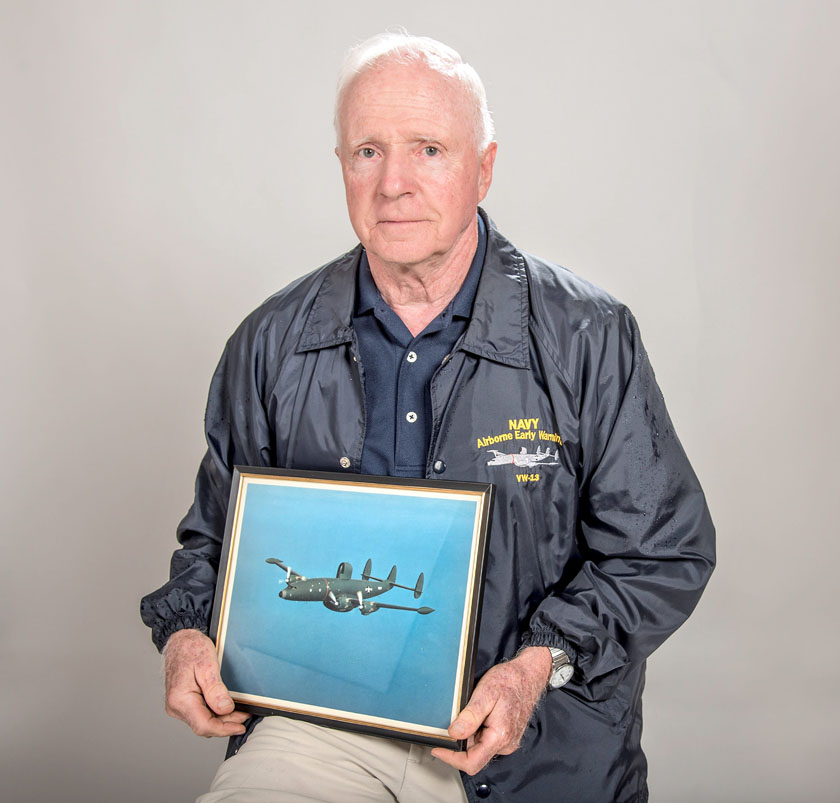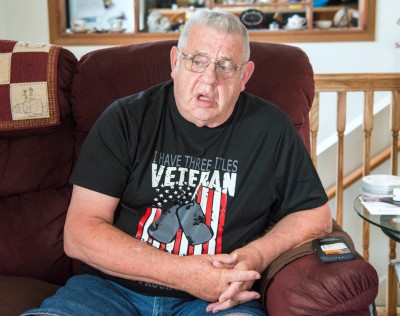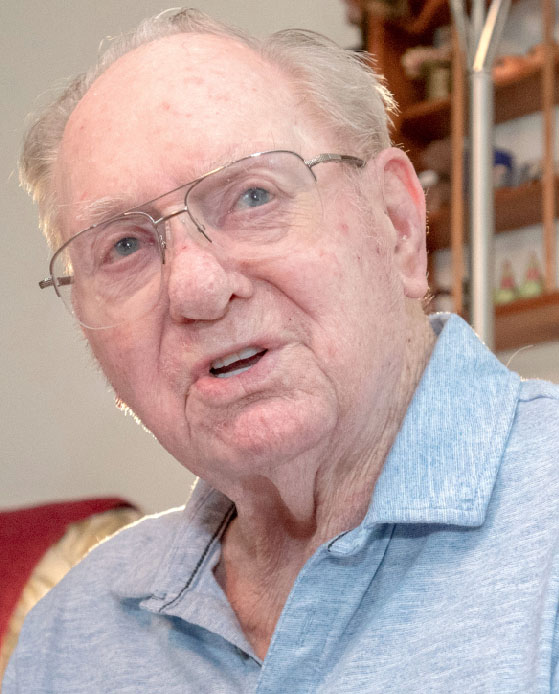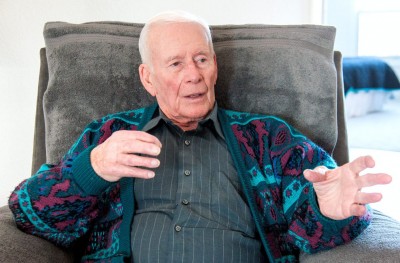Marty Zvonar
By Paul Wood

Photo By Heather Coit/The News-Gazette
MONTICELLO — Marty Zvonar served in the Navy from 1957 to 1961, the height of the Cold War, when he recalls, children were taught to “duck and cover” if the Soviets bombed our continent.
“The U.S. was scared to death,” he said.
“The Soviets had just launched Sputnik. (Premier Nikita) Khrushchev came to the United Nations and pounded his shoe on the table, saying ‘we will bury you,'” he recalled.
As part of his service, he flew in the midst of the disastrous Bay of Pigs invasion of Cuba, and as part of the thank you for his service, he met Tom Hanks at a veterans event.
Zvonar, 78, a Chicago native, enlisted in the Navy in 1957 and served until 1961, just in time for the Bay of Pigs.
Then, on the GI Bill, he earned two degrees from the University of Illinois, and spent most of his career at Parkland College.
Before the transistor transformed electronics, Zvonar flew in converted Lockheed Constellation planes over the North Atlantic from Newfoundland almost to Portugal, along the North Atlantic Radar Barrier.
“Radar contacts picked up by the Super Constellations were the only warning given to the United States in case Russian Bison Bombers were on there way,” he said.
Before radar could conquer the curvature of the Earth, planes had to divide sectors up.
Radar was primitive before transistors. They worked on vacuum tubes that had to be air-conditioned even in the sky, so the men in the plane wore heavy uniforms.
Zvonar flew more than 100 radar flights.
The trips were dangerous. If the plane had to ditch into the North Atlantic, the crew could only last about 18 minutes before the frigid water rendered them unconscious.
Rescue was not a likelihood.
“There weren’t that many ships in the area,” he said.
For excitement, “we once spotted a pod of whales, left our altitude and kind of buzzed them.”
More exciting was spotting a Soviet trawler.
“We’d see Russian fishing boats — tongue in cheek here — leave altitude, and wiggle our wings at them,” Zvonar said.
“They’d wave and take their caps off. A couple days later, the (Soviet) newspaper articles accused the U.S. of aggression.”
The weather could be deadly.
“We flew into Newfoundland when it was snowing sideways,” he recalled.
Zvonar’s biggest adventure was near the end of his career, the Bay of Pigs.
President John F. Kennedy wanted to make a show of force against Cuban dictator Fidel Castro, and the CIA landed 1,400 counter-revolutionaries on the south of the island, the so-called Bay of Pigs.
Initially, they were successful.
“But the Cubans did not lift a hand to help them,” he said.
Zvonar’s crew learned at 2 a.m. that they had a 6 a.m. “wheels up” — there was no further explanation.
Off the coast of New York, the crew was told over the public address system that there was unrest in Cuba, and that’s where they headed.
But there was no confrontation, and soon he was out of the service.
It wasn’t his last brush with greatness.
In 2004, Zvonar was one of the 52 area participants on the tour of Washington.
He watched the dedication ceremonies for the National World War II Memorial.
Later, Zvonar went to dinner at a nearby restaurant.
“Tom Hanks, his wife and children sat at a table not far from me,” Zvonar said. “Everybody in the restaurant gave Tom Hanks a standing ovation for about 30 seconds.”
Before he left, he stopped at the “Saving Private Ryan” star’s table and said, “Mr. Hanks, thank you very much.” “He shook my hand and said, ‘Thank you, sir.'”
Zvonar, who is married to Karen, has two sons.
Do you know a veteran who could share a story about military service? Contact staff writer Paul Wood at pwood@news-gazette.com.
Read more stories from local veterans:
 Mike Lueth
PHILO — Mike Lueth always had cigarettes with him in Vietnam. Not that he smoked. They were good for burning leeches off …
Mike Lueth
PHILO — Mike Lueth always had cigarettes with him in Vietnam. Not that he smoked. They were good for burning leeches off …
 Cleo Grovier
RANTOUL — Fireman First Class Cleo Grovier was on a landing craft headed to invade Japan when he learned two atom bombs …
Cleo Grovier
RANTOUL — Fireman First Class Cleo Grovier was on a landing craft headed to invade Japan when he learned two atom bombs …
 Ray Heckler
URBANA — With a shell-shocked soldier for a companion, Ray Heckler drove a Jeep near the Rhine River as shells landed al …
Ray Heckler
URBANA — With a shell-shocked soldier for a companion, Ray Heckler drove a Jeep near the Rhine River as shells landed al …